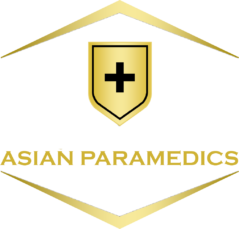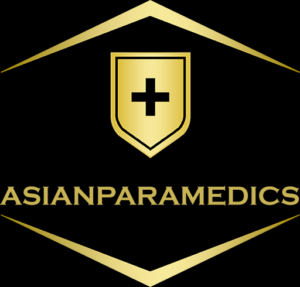Blood Banking MCQs:
These 300+ multiple-choice questions (MCQs) are designed to test your knowledge and understanding of various aspects of blood banking, a critical component of transfusion medicine. Blood banking involves the collection, processing, testing, storage, and distribution of blood and blood components to ensure their safe and effective use in medical treatments. The questions cover a wide range of topics, including blood typing, compatibility testing, transfusion reactions, blood component therapy, and the management of adverse events. By answering these questions, you will gain a deeper insight into the complexities and importance of blood banking in modern healthcare.
MCQ Test
301. A patient multiply transfused with Red Blood Cells developed a headache, nausea, fever, and chills during his last transfusion. What component is most appropriate to prevent this reaction in the future?
a. Red Blood Cells
b. Red Blood Cells, Irradiated
c. Red Blood Cells, Leukocyte-Reduced ✅
d. Red Blood Cells selected as CMV-reduced-risk
302. The use of Leukocyte-Reduced Red Blood Cells and Platelets is indicated for which of the following patient groups?
a. CMV-seropositive postpartum mothers
b. victims of acute trauma with massive bleeding
c. patients with history of febrile transfusion reactions ✅
d. burn victims with anemia and low serum protein
303. Leukocyte-Poor Red Blood Cells would most likely be indicated for patients with a history of:
a. febrile transfusion reaction ✅
b. iron deficiency anemia
c. hemophilia A
d. von Willebrand disease
304. Posttransfusion anaphylactic reactions occur most often in patients with:
a. leukocyte antibodies
b. erythrocyte antibodies
c. IgA deficiency ✅
d. Factor VIII deficiency
305. Which of the following transfusion reactions occurs after infusion of only a few milliliters of blood and gives no history of fever?
a. febrile
b. circulatory overload
c. anaphylactic ✅
d. hemolytic
306. Fever and chills are symptoms of which of the following transfusion reactions?
a. citrate toxicity
b. circulatory overload
c. allergic
d. febrile ✅
307. Hives and itching are symptoms of which of the following transfusion reactions?
a. febrile
b. allergic ✅
c. circulatory overload
d. bacterial
308. A temperature rise of 10C or more occurring in association with a transfusion, with no abnormal results in the transfusion reaction investigation, usually indicates which of the following reactions?
a. febrile ✅
b. circulatory overload
c. hemolytic
d. anaphylactic
309. A 65-year-old woman experienced shaking, chills, and a fever of 1020F (38.90C) approximately 40 minutes following transfusion of a second unit of Red Blood Cells. The most likely explanation for the patient’s symptoms is:
a. transfusion of bacterially contaminated blood
b. congestive heart failure
c. anaphylactic transfusion reaction
d. febrile transfusion reaction ✅
310. A sickle cell patient who has been multiply transfused experiences fever and chills after receiving a unit of Red Blood Cells. Transfusion investigation studies show:
| Test |
Result |
| DAT |
negative |
| plasma hemolysis |
no hemolysis observed |
The patient is most likely reacting to:
a. IgA
b. plasma protein
c. red cells
d. white cells or cytokines
✅
311. Use of only male donors as a source of plasma intended for transfusion is advocated to reduce which type of reaction?
a. allergic
b. TRALI ✅
c. hemolytic
d. TACO (circulatory overload)
312. Platelets are ordered for a patient who has a history of febrile reactions following red cell transfusions. What should be done to reduce the risk of another febrile reaction?
a. pretransfusion administration of BENADRYL
b. transfuse Irradiated Platelets
c. give Platelets from IgA-deficient donors
d. give Leukocyte-Reduced Platelets ✅
313. Symptoms of dyspnea, cough, hypoxemia, and pulmonary edema within 6 hours of transfusion is most likely which type of reaction?
a. anaphylactic
b. hemolytic
c. febrile
d. TRALI ✅
314. A patient with a coagulopathy was transfused with FP24 (plasma frozen within 24 hours of collection). After infusion of 15 mL, the patient experienced hypotension, shock, chest pain, and difficulty in breathing. The most likely cause of the reaction is:
a. anti-IgA
b. bacterial contamination
c. intravascular hemolysis
d. leukoagglutinins ✅
315. To prevent febrile transfusion reactions, which Red Blood Cell product should be transfused?
a. Red Blood Cells, Irradiated
b. CMV-negative Red Blood Cells
c. Red Blood Cells, Leukocyte-Reduced ✅
d. IgA-deficient donor blood
316. During the issue of an autologous unit of Whole Blood, the supernatant plasma is observed to be dark red in color. What would be the best course of action?
a. the unit may be issued only for autologous use
b. remove the plasma and issue the unit as Red Blood Cells
c. issue the unit only as washed Red Blood Cells
d. quarantine the unit for further testing ✅
317. Coughing, cyanosis, and difficult breathing are symptoms of which of the following transfusion reactions?
a. febrile
b. allergic
c. circulatory overload ✅
d. hemolytic
318. Which of the following is a nonimmunologic adverse effect of a transfusion?
a. hemolytic reaction
b. febrile nonhemolytic reaction
c. congestive heart failure ✅
d. urticaria
319. Congestive heart failure, severe headache, and/or peripheral edema occurring soon after transfusion is indicative of which type of transfusion reaction?
a. hemolytic
b. febrile
c. anaphylactic
d. circulatory overload ✅
320. A patient with severe anemia became cyanotic and developed tachycardia, hypertension, and difficulty breathing after receiving 3 units of blood. No fever or other symptoms were evident. This is most likely what type of reaction?
a. febrile reaction
b. transfusion-associated circulatory overload (TACO) ✅
c. anaphylactic reaction
d. hemolytic reaction
321. A patient became hypotensive and went into shock after receiving 50 mL from a unit of Red Blood Cells. She has a shaking chill and her temperature rose to 104.80 F (40.40C). A transfusion reaction investigation was initiated but no abnormal results were seen. What additional testing should be performed?
a. Gram stain and culture of the donor unit ✅
b. lymphocytotoxicity tests for leukoagglutinins
c. plasma IgA level
d. elution and antibody identification
322. The most frequent transfusion-associated disease complication of blood transfusion is:
a. cytomegalovirus (CMV)
b. syphilis
c. hepatitis ✅
d. AIDS
323. The purpose of a low-dose irradiation of blood components is to:
a. prevent posttransfusion purpura
b. prevent graft-vs-host (GVH) disease ✅
c. sterilize components
d. prevent noncardiogenic pulmonary edema
324. Which of the following patient groups is at risk of developing graft-vs-host disease?
a. full term infants
b. patients with history of febrile transfusion reactions
c. patients with a positive direct antiglobulin test
d. recipients blood donated by immediate family members ✅
325. Irradiation of donor blood is done to prevent which of the following adverse effects of transfusion?
a. febrile transfusion reaction
b. cytomegalovirus infection
c. transfusion associated graft-vs-host disease ✅
d. transfusion related acute lung injury (TRALI)
MCQ Test
326. Therapeutic plasmapheresis is performed in order to:
a. harvest granulocytes
b. harvest platelets
c. treat patients with polycythemia
d. treat patients with plasma abnormalities ✅
327. Plasma exchange is recommended in the treatment of patients with macroglobulinemia in order to remove:
a. antigen
b. excess IgM ✅
c. excess IgG
d. abnormal platelets
328. The most important step in the safe administration of blood is to:
a. perform compatibility testing accurately
b. get an accurate patient history
c. exclude disqualified donors
d. accurately identify the donor unit and recipient ✅
Pages:
1 2 3 4 5 6 7 8 9 10 11 12 13


